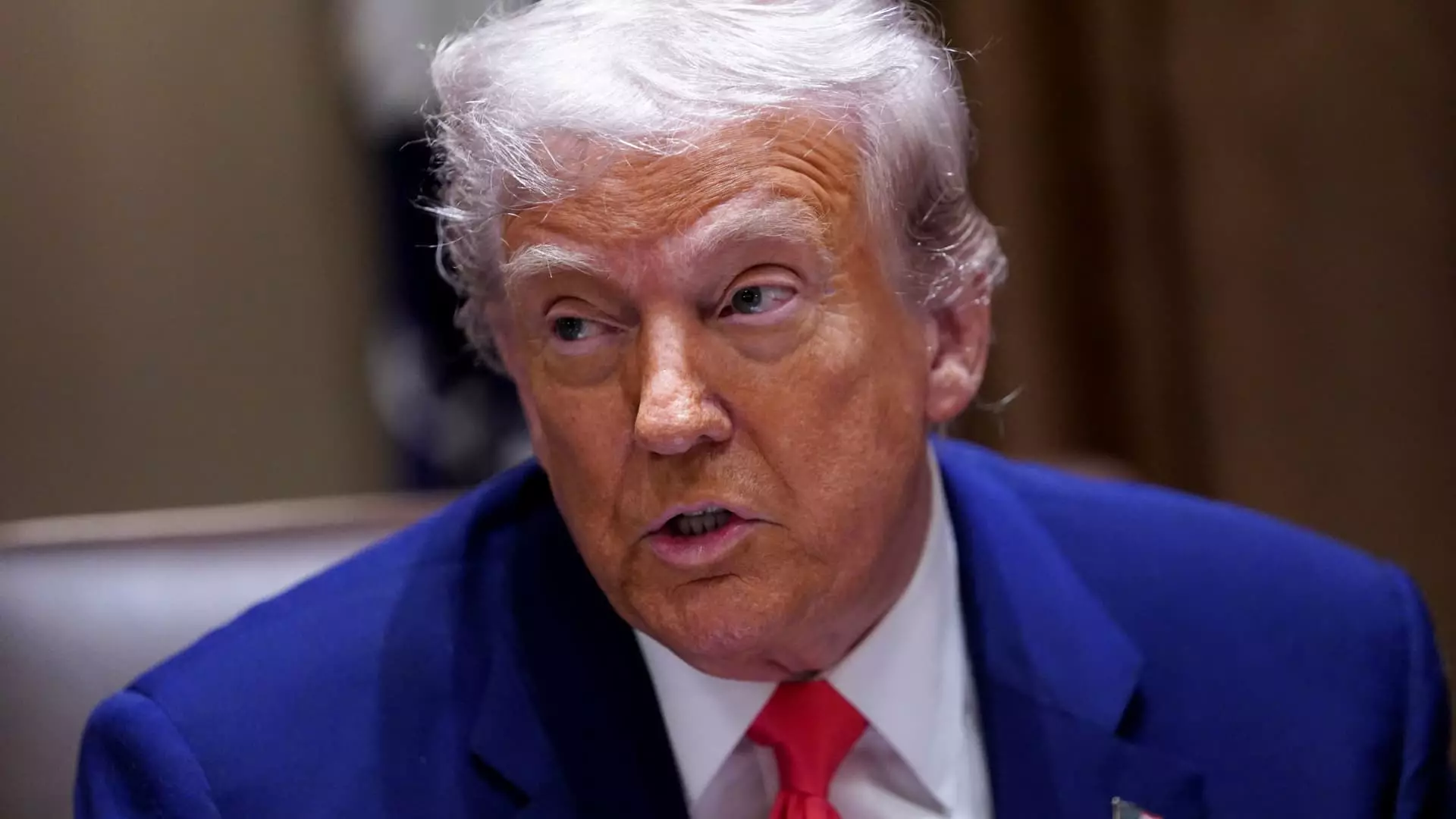The striking increase of tariffs on Chinese imports to a staggering 145% presents an alarming crossroads in economic policy and international relations. President Donald Trump’s aggressive tariff strategy, viewed through the lens of center-right wing liberalism, raises more questions than it answers. While the intent might be to protect American industries, the collateral damage inflicted upon the broader economy cannot be overlooked. An economist such as Erica York from the Tax Foundation aptly demonstrates the potentially catastrophic implications of levying such exorbitant tariffs — they are likely to cripple trade and intensify economic isolation.
Government intervention in trade should be a carefully calibrated tool used to achieve specific goals without undermining the very foundation of the free market. As the current situation unfolds, it exemplifies how drastic measures often evoke drastic repercussions. With tariffs exceeding 100%, it’s only natural to expect companies to pivot operations or reduce imports significantly. However, like a double-edged sword, these implications extend beyond just numbers; they affect real jobs, consumer prices, and ultimately, economic morale.
The Stock Market’s Uneasy Response
The financial markets, already skittish, reacted predictably to Trump’s announcement. The euphoric buoyancy observed just a day prior melted away as fears of escalating trade tensions prompted sell-offs. Investors are keenly attuned to the realities that high tariffs portend — increased costs passed down to consumers, diminished purchasing power, and hindered economic growth. As York observed, the landscape isn’t entirely bleak, but it certainly isn’t promising. The government’s patchwork approach to tariffs has unsettled a delicate balance, ushering in instability that no market craves.
Moreover, Trump’s partial rollback of tariffs on other countries, while retaining the high rates on China, signals confusion rather than a coherent strategy. The transient nature of the current economic environment begs the question: can businesses adapt in time, or will they collapse under the weight of these new burdens? It seems that traders are bracing for a tumultuous journey ahead, and understandably so.
The Question of Economic Sovereignty
At the root of these tariffs lies the broader theme of economic sovereignty. Advocates argue that imposing tariffs on imports grants the U.S. greater control over its economic future. But such a perspective may very well overlook the reciprocal nature of global trade. China has already hinted at an unwillingness to back down, raising its own retaliatory tariffs from 34% to 84%. This tit-for-tat scenario feeds into a dangerous cycle where both nations suffer detrimental consequences. It begs a deeper inquiry into whether sacrificing the spirit of cooperation for fleeting notions of isolationism is worth the potential fallout.
The consequences of this escalated trade war extend far beyond abstract economic metrics. Families are dependent on affordable goods that could see pricing skyrocket in the face of aggressive tariffs. With the average American more concerned about day-to-day financial matters than grand geopolitical maneuvers, it’s increasingly apparent that the stakes here are for all of us. To embrace tariffs as a remedy for all economic woes not only simplifies a complex issue but also could turn the United States into an economic fortress, unyielding and ultimately stagnant.
Historical Parallels and the Path Forward
Historically, America has ventured into protectionist policy gambits with mixed outcomes, the most notorious being the Smoot-Hawley Tariff during the Great Depression. Rising tariffs exacerbated economic downturns rather than alleviating them, leading to job losses and higher consumer prices. To reflect on past missteps should serve as a cautionary tale in our current climate. The central question becomes whether we’ve truly learned from history or if we’re binding ourselves to a cyclical pattern of errors.
Trump’s tariffs may indeed result in a temporary influx of federal revenue, reported to reach an estimated $171.6 billion. However, this short-term gain is misleading if it comes at the expense of fostering long-term economic health. As we navigate these turbulent waters, a dedicated commitment to assessing and embracing policies that serve both national interests and global economic interdependence is crucial. We must strike a balance that protects American industries without curtailing the fundamental liberties afforded by a free market. Balancing sovereignty with openness may be the only route forward from this tumultuous, costly affair.

